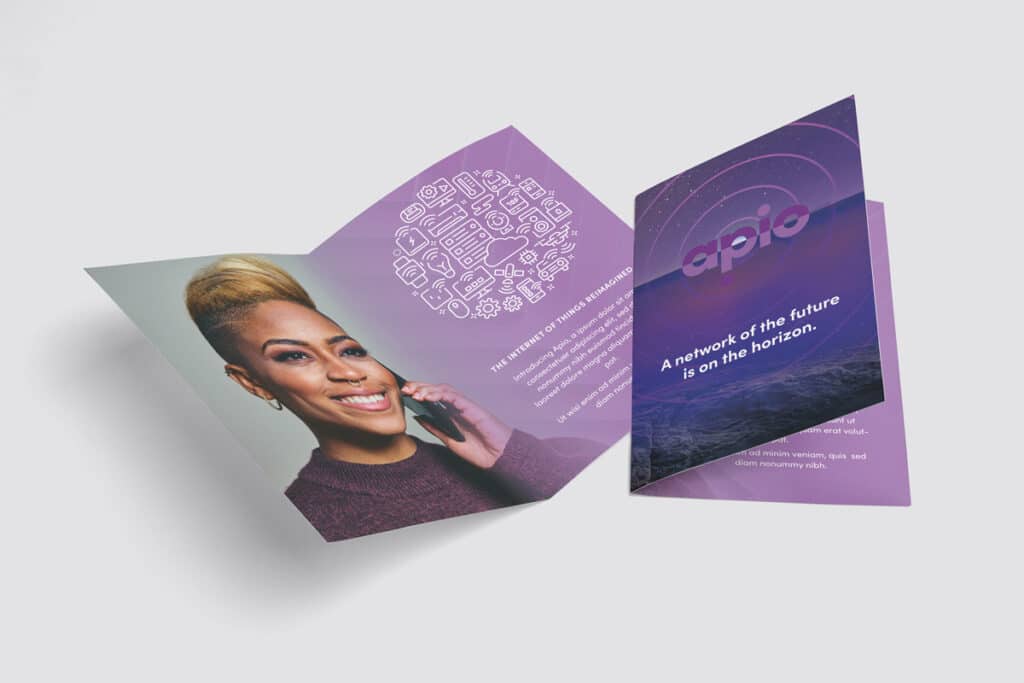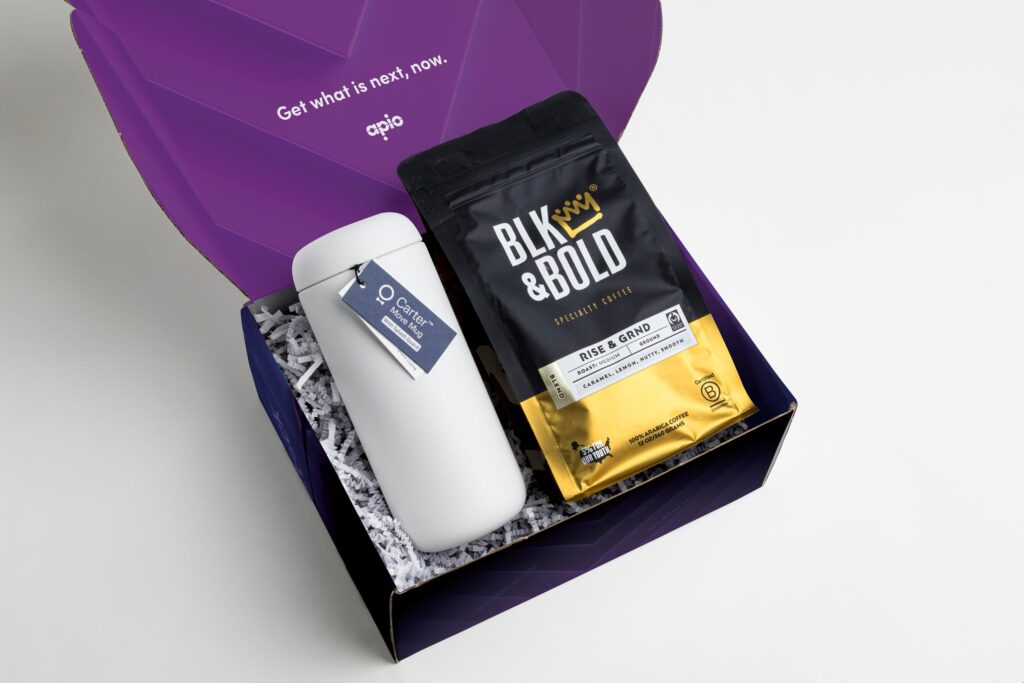
During the pandemic, many in-person events such as trade shows, conferences, and workshops were replaced by online alternatives. Guests would attend virtually, watching presentations and participating in conference calls via video link. It was a strange new world for events, but at least one you could navigate while wearing comfy sweatpants.
As the world eased out of lockdown, digital events transitioned back to in-person events. But many organizers, having benefited from the convenience of online events, settled on a half-way point between the two formats: hybrid events.
Here we discuss exciting hybrid event ideas based on print marketing, looking at how hybrid events work and how print campaigns can make them a success.
What are Hybrid Events?
A hybrid event is an in-person event with virtual components. Some participants gather at the designated physical location, while others attend virtually via the internet. In some cases, virtual attendees passively watch the in-person activities (via a live YouTube stream, for example).
In other cases, they may actively participate in a video conference or text-based chat. Another scenario is for the event organizer to plan distinct activities for the physical and online guests, allowing staff to focus on one format or the other.
Hybrid events are common in the business world, as the format is highly suited to trade shows and conferences. Global industry events, for example, often invite guests from other countries (and other time zones) to attend virtually—a trend that predates the pandemic.
However, hybrid events can also be found in academia and entertainment: university seminars may have virtual guest speakers, while live concerts may have both in-person and virtual ticketing.
Although many people are still enjoying the novelty of in-person events after a long break, hybrid remains an exciting format. According to research from the Professional Convention Management Association (PCMA), 90 percent of event professionals may continue using digital strategies for in-person events in the post-pandemic world.
How Print Materials Help

Since hybrid events have two distinct components—in-person and virtual—print marketing can play two distinct roles.
The first and broadest application of print at hybrid events is targeting the in-person attendees. Strategies here can be similar to those deployed at traditional in-person events: programs, flyers, kits, stickers, and event-branded merchandise like magnets and pens can be distributed at the event to promote products or encourage future participation. Costs can be kept low, as the print media is distributed at the event location rather than mailed.
Targeting virtual attendees of hybrid events has less scope for creativity but is arguably more important, as these participants are more likely to drop out or pay less attention to event proceedings. Print marketing can play a vital role here by convincing the virtual attendees of their importance to the event.
A simple and effective option is a visually appealing mailer with a QR code linking to the event website. Promoters may also try distributing a symbolic ticket complete with tear-away stubs for virtual invitees, providing them with a feeling of genuine participation. Detailed pamphlets and programs can also assist virtual guests while they watch video presentations or performances.
Some print media can be applicable to both in-person and virtual guests, such as pre-event promotion via flyers or mailers that entice recipients to sign up for the event or a particular item on its program, either locally or remotely.
Examples of Print Marketing at Hybrid Events
Print marketing is a great way to generate interest in hybrid events, and not just for in-person attendees. These three examples are just some of the ways that print media can inspire a positive hybrid experience.
Gift Swap Kit
One Printing for Less customer hosting a hybrid event came up with a novel plan for encouraging in-person attendance. They used a highly strategized mail campaign to send low-cost pairs of sunglasses to a selection of potential attendees; within the package was an invitation to exchange the plastic eyewear for a pair of genuine Ray-Bans at the event.
Dynamic QR Code Mailers
Several event organizers have used Printing for Less mailers to drum up interest for in-person, virtual, and hybrid events. One advantage of mailing print media is that it creates a tangible aspect to the event even for virtual attendees. These mailers can feature a QR code that leads the recipient directly to the event website.
Printed Merchandise
Events that are pushing in-person attendance may entice potential guests with branded event merchandise such as water bottles. Unlike paper advertising, such merchandise is typically kept for a long time after the event, helping to maintain brand awareness for future events or product launches.

Print Marketing for Hybrid Events
The last few years won’t be remembered fondly by many, but there has been at least one silver lining. New online infrastructure has been developed, and previously technophobic computer users are now familiar with video conferencing tools like Zoom and Microsoft Teams. This has laid the foundation for hybrid events to continue long into the future.
Of course, promoting hybrid events isn’t always straightforward. Having been forced to use their computers for business and personal activities throughout the pandemic, some people are reluctant to participate in digital events. But print media can give these skeptics a physical connection to the hybrid event they would otherwise be lacking, resulting in a positive experience for the virtual participants. Meanwhile, the same tried-and-tested print strategies for traditional in-person events can be used to great effect for the in-person portion of a hybrid event.
Hybrid event organizers looking for inspiration can contact Printing for Less to request a catalog of event-specific products.
